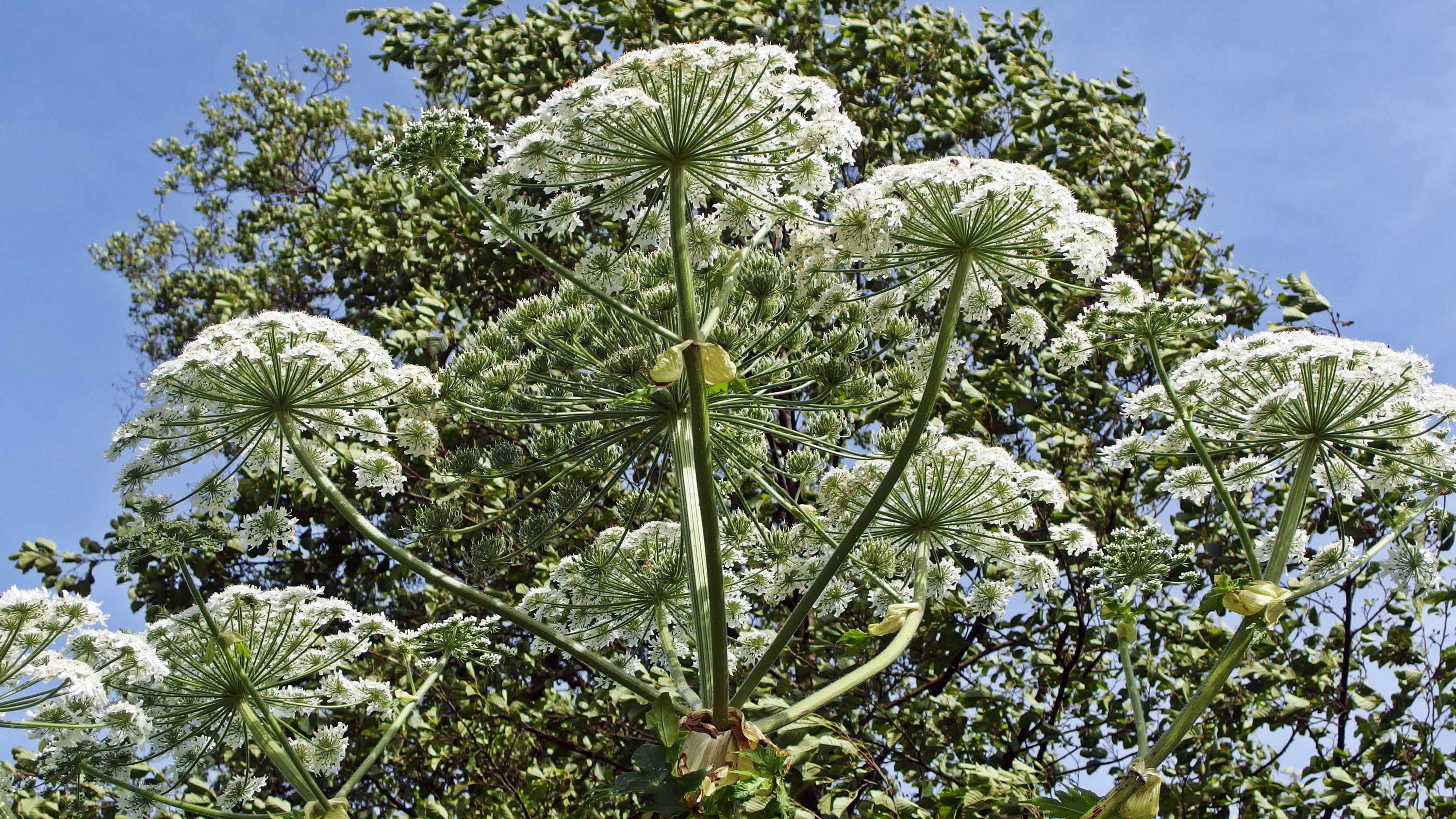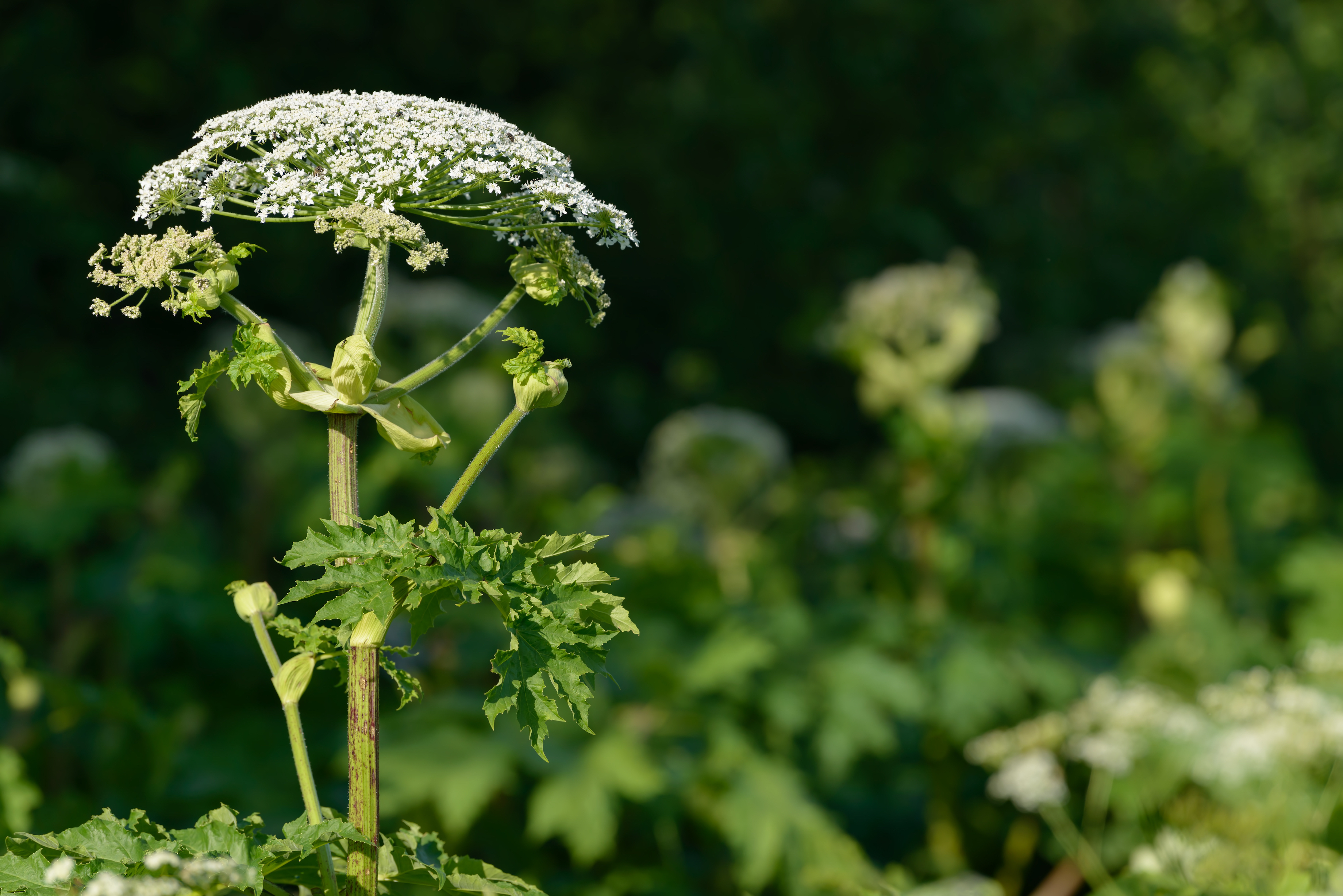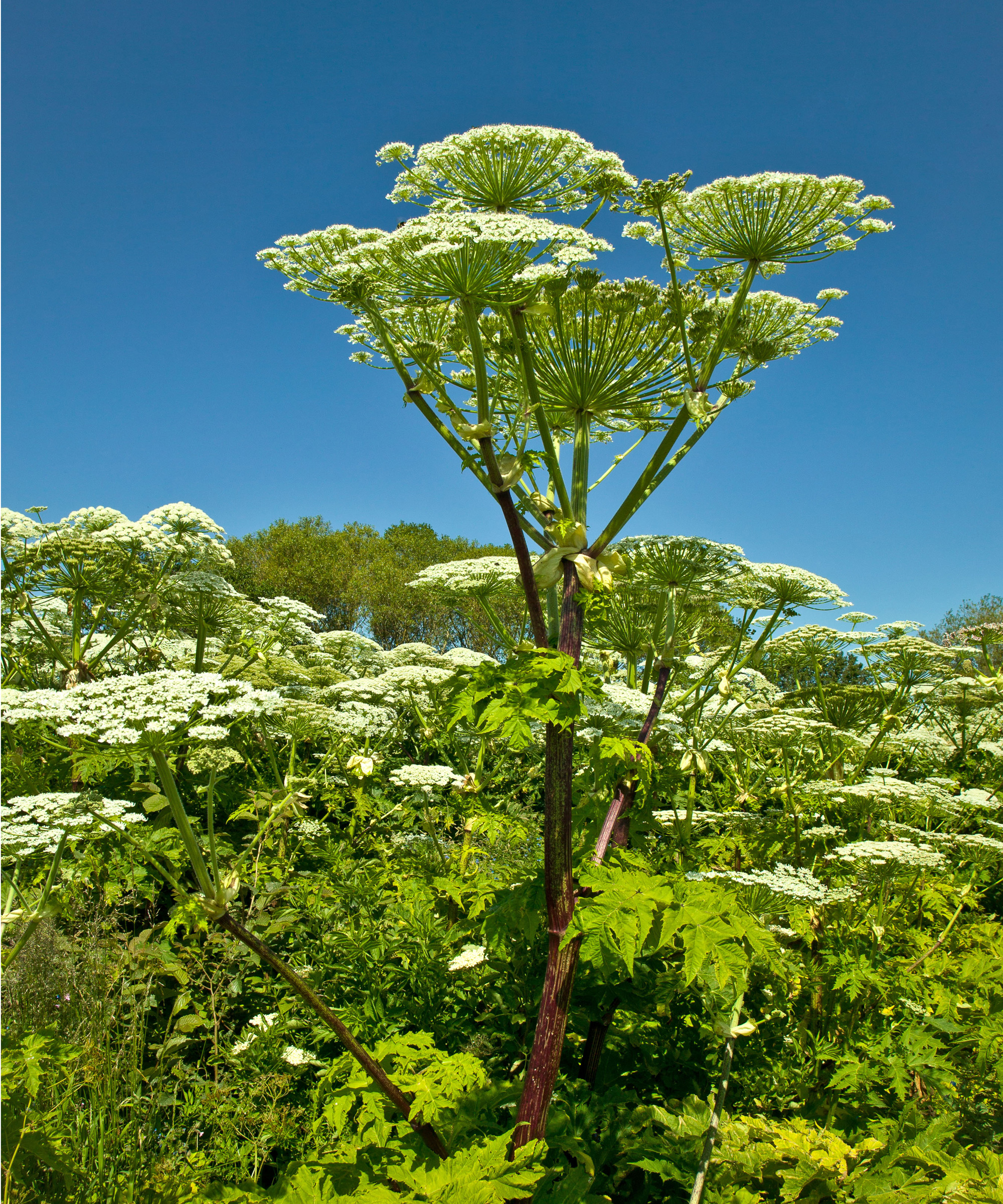The UK is being gripped by a Giant Hogweed infestation – hikers are being warned to avoid the toxic plant
Following reports of a Giant Hogweed infestation across the UK, a location map has been launch to help identify the dangerous plant hotspots

A Giant Hogweed infestation is affecting both urban and rural areas across the UK. The highly toxic plant that can be mistaken for cow parsley is reported to have spread as far north as Scotland, with a man recently admitted to hospital with third-degree burns after coming into contact with the plant. If you're learning how to weed a garden, or planning to go for a nature walk, you need to know how to identify this dangerous plant.
Heracleum mantegazzianum, more commonly known as Giant Hogweed, is often referred to as ‘the most dangerous plant in Britain’ due to the burning and scarring it can cause. The sap of the plant contains furocoumarins, organic chemical compounds that are toxic to humans. The compounds seep into skin cells, preventing the skin from being able to fully protect itself from sunlight, leading to skin damage.

Short-term symptoms of coming into contact with Giant Hogweed include blistering, irritation and inflammation and long-term symptoms can include disfiguration, purple blotches and serious scarring. These symptoms can last for months or even years after the initial contact.
Giant Hogweed is often found along riverbanks and canals as its seeds are transported through water. When the plant is fully grown it can reach up to 5m tall with an overall spread of 1-2m. The large size that gives the plant its name is the most obvious identification aid of this plant, but younger, smaller plants can be mistaken for cow parsley, hemlock, or even wild carrot. All of these plants have a similar appearance, with florets rising out of tall stems with jagged leaves.
This makes it even more important to learn how to identify Giant Hogweed, even if it's not reached its characteristic tall height. The things to look out for are:
- Stems - green with purple blotches and white hairs. They have a thick circle of hairs at the base of each stalk.
- Leaves - very large and can span up to 1.5m wide and 3m long. The leaves are divided into smaller leaves and look similar to a rhubarb leaf, with a hairy underside.
- Flowers - appearing in June and July these are small clusters of white flowers that face upwards.
- Seeds - approximately 1cm long and are dry, flattened, and oval.

The purple blotched stems with hairs are the most reliable sign of Giant Hogweed; by comparison, cow parsley has green stems. Hemlock does have purple blotches on its stems, but the stems are smooth, not hairy. Hemlock is highly toxic when ingested but not if you just brush past it. Both cow parsley and hemlock are much smaller when mature than Giant Hogweed.
If in doubt, do not touch any plant you can't identify. Following the closure of the PlantTracker app, WhatShed.co.uk have created a page tracking the spread of Giant Hogweed throughout the United Kingdom. You can consult the map to be aware of Giant Hogweed locations in your area.
Head over to our weed control tips and tricks features for advice on getting rid of weeds in your garden, or check out our guide to the best weed killer if you need a helping hand in your task.
Anna writes about interior design and gardening. Her work has appeared in Homes & Gardens, Livingetc, and many other publications. She is an experienced outdoor and indoor gardener and has a passion for growing roses and Japanese maples in her outside space.
